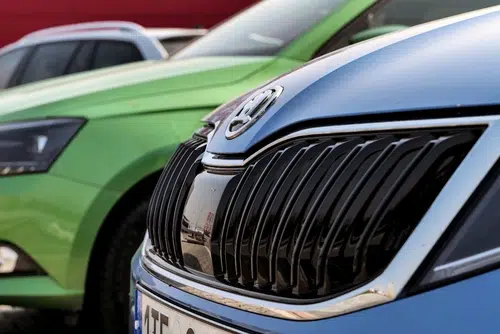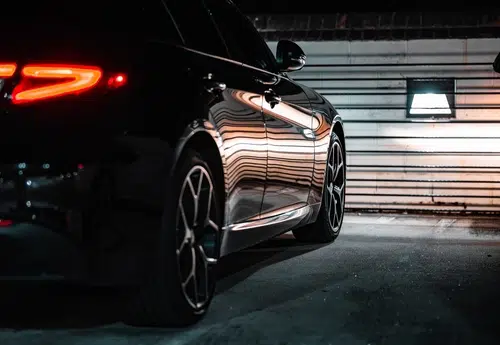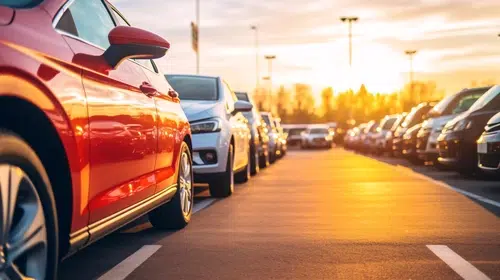Car Insurance Groups [A Complete Guide]
![Car Insurance Groups [A Complete Guide]](https://www.cheapsr22.us/wp-content/uploads/2024/05/1716467566_Car-Insurance-Groups-A-Complete-Guide.webp.webp)
When it comes to calculating your car insurance premium, providers consider various factors and data. This includes the insights provided by UK car insurance groups. Insurance groups provide insurers with useful information around the insurability of specific cars, but how do they work? And which cars are deemed to be the most insurable?
Read on to find out more about car insurance groups and their importance for insurance companies.
What are car insurance groups?
Car insurance groups are used by insurance providers as a rating system, to help them determine the risks associated with insuring a particular car. The system is operated by the Association of British Insurers (ABI) and backed by data sourced from Thatcham Research.
The way it works is, for cars that are categorised into lowest insurance groups, they’re deemed to be cheapest cars to insure on an annual basis, whereas for cars that placed into higher car insurance groups, they’ll be more expensive to insure.
This essentially means that insurance companies deem cars in a lower insurance group to be less likely to be at risk or involved in an accident, which therefore enables them to offer lower insurance premiums on these cars. On the other hand, you can expect rarer, faster or more expensive cars to be placed under higher insurance groups though, however, and the owners of these cars can expect to pay higher insurance premiums.
Do bare in mind though that car insurance providers will not only consider insurance groups when they calculate policy premiums, because other factors will affect the amount you pay. Car insurance groups work for insurers as a starting point to which they can work from.
Car insurance group rating factors
There’s a range of factors that the Group Rating panel consider when determining which cars should go in which insurance groups. These include:
Price of parts
The cheaper it is for the parts needed to repair a vehicle, the cheaper it’ll be to insure.
Car performance
Faster and higher performance cars are typically associated with higher risks, making them more likely to be in a higher insurance group.
Car value
Pricier cars are usually more expensive to replace or repair, which would therefore make them more expensive to insure.
Time it takes to repair
Longer repair times normally mean higher costs, and higher costs make a car more expensive to insure.
Car security and safety
Cars with better safety systems and security features installed are seen as less likely to be involved in accidents.
If you’re looking to buy a new car, but have a limit in terms of how much you can spend, it’s important that you consider these factors and how they relate to the car you’re looking at, because they will influence how much insurers will charge for premiums.
How many insurance groups are there?
So, we’ve already determined that, typically, the lower the insurance group your car is in, the less you’d need to pay to insure it. But how many car insurance groups are there?
In total, there are 50 different car insurance groups. Car insurance group No.1 is where you’ll find all the cars that are the cheapest to insure, whilst car insurance group 50 is where all the cars that are the most expensive to insure can be found.
This hasn’t always been the case though, as prior to 2009 there were actually only 20 insurance groups. According to Thatcham, the current, expanded system means that “each model of car can be more accurately banded with cars of similar characteristics and therefore create a more precise Group Rating System.”
What are Group 1 insurance cars?

Understandably, you’re now probably wondering which cars sit under car insurance group No.1. Below is a list of cars and models that sit under this group, which are also known to be practical and affordable.
Car brandCar modelChevroletSparkCitroenC1FiatPandaFordKAHyundaii10, i11KiaPicanto, RioNissanMicraSkodaFabiaVauxhallCorsaVolkswagenFox, Polo, Up
Some honourable mentions and cars featuring in car insurance group 2 include the Toyota Yaris, the Dacia Logan and the Peugeot Partner.
What do letters mean on car insurance groups?
Insurance groups do range between the numbers 1 and 50, but you might see that cars are also assigned a letter after their insurance group number which determines the car’s level of safety. So, for example, a Skoda Fabia might belong under the No.1 car insurance group and have a security rating of ‘A’.
There are 6 different letters that are used to classify a car’s safety level, and they are as follows:
E = Exceeds the security requirement for a car of this type and the group rating has been reduced – so a group 10 car that exceeds the standard is listed as a 9E.
A = Acceptable security requirements for the car’s group.
P = Provisional – incomplete data when the model was launched.
D = Doesn’t meet the security requirement for a car of this type and the group rating has been increased as a result – so a group 8 car that doesn’t meet the standard is listed as a 9D.
U = Unacceptable – the level of security is significantly below requirements. The car won’t be uninsurable, but some insurers may insist on a security upgrade before they cover you.
G = Import – Insurance Group Ratings and security ratings are currently only allocated to vehicles built for the UK market.
These letter ratings are important for insurers because they help them understand how safe certain cars are, and this ultimately influences how they calculate insurance premiums, with E rated cars typically being cheaper to insure than D rated cars, for example.
What insurance group is my car?
There are many different car insurance group ‘checkers’ out there online that you can use to find out which group your car is allocated to, including these:
Normally when checking online all you’ll need to do to is provide the insurance group checker tool with the vehicle’s registration number and you’ll then find out your car’s insurance group right away.
How are car insurance premiums determined?

How much your car insurance costs will depend on how likely your insurer believes you are likely to make a car-related claim, and how significant they believe these claims will be.
However, calculating the likelihood of you making numerous, substantial claims or zero claims is not straightforward. In fact, insurance companies have to consider several factors, all relating to the potential policyholder and their vehicle. These include:
Your personal details – age, address, occupation.
Your claims and driving history.
How much excess you’re willing to pay.
The types and levels of cover you want on your policy.
The make and model of your car (that’s where insurance groups come into play!)
Where you’ll park the car overnight
How can you reduce your car insurance premiums?
The key thing to remember is that premiums are typically determined based on how much the insurer believes you are a risk to them. The safer your car is, and you are as a driver, the less likely it is that you’ll need to make a claim, which will encourage insurers to offer you are lower premium.
Here are some ways that you could potentially cut the cost of your car insurance premium:
Install car security features
Only get insurance cover that you need
Add a named driver to your policy
Pay for your policy upfront, not in monthly instalments
Drive fewer miles if you can
Beware the impact of modifications
Opt for black box insurance
Protect your no-claims bonus
If you need more insight or advice around how you can reduce your car insurance premiums, you can always get in touch with an insurance broker like Howden. A member of our team would be more than happy to help, whether you give them a call on 01869 323 322 or visit them in your Howden local branch.
Summary

Car insurance groups, decided by ABI’s Group Rating Panel, significantly support the car insurance industry, providing insurers with valuable insight around the safety and security levels of modern day cars.
The less likely a car is deemed to be involved in an accident or be at risk, the more likely they’re going to be categorised under a low insurance group. Whereas, pricier, faster and more powerful cars tend to sit under the higher insurance groups because of how more likely they are to be associated with driver claims.
If you’re looking for a new car and want to pay the cheapest car insurance premiums, we recommend picking a Group 1 car, such as a Volkswagen Up or a Skoda Fabio. Whilst the insurance group of the vehicle is not the sole determining factor that decides how much your premium will be, picking a low insurance group car can help reduce your premiums, along with picking a suitable policy, install vehicle security features, and avoiding making claims.
Car Insurance Groups FAQs
What are van insurance groups?
Van insurance groups work in the same way car insurance groups do – instead they categorise vans! Insurers use van insurance groups to help them determine how much a van insurance policy premium should be based on the van itself.
To find out more on this topic, read our Van Insurance Groups article.
What do I need to get a car insurance quote?
The minute you get in touch with a member of the Howden team they’ll start right away with helping you get your hands on a car insurance quote that works for you.
However, first, we’ll need you to provide with some information, including:
Personal details – your name, your age, your job title, where you live etc.
Information about your car – the registration number, how old it is, the make and model.
How you’ll use the car – What is your annual mileage? Will you be driving the car for pleasure or business?
Your driving record – we’ll need claim history details, your driving license number and how long you’ve been driving for.







